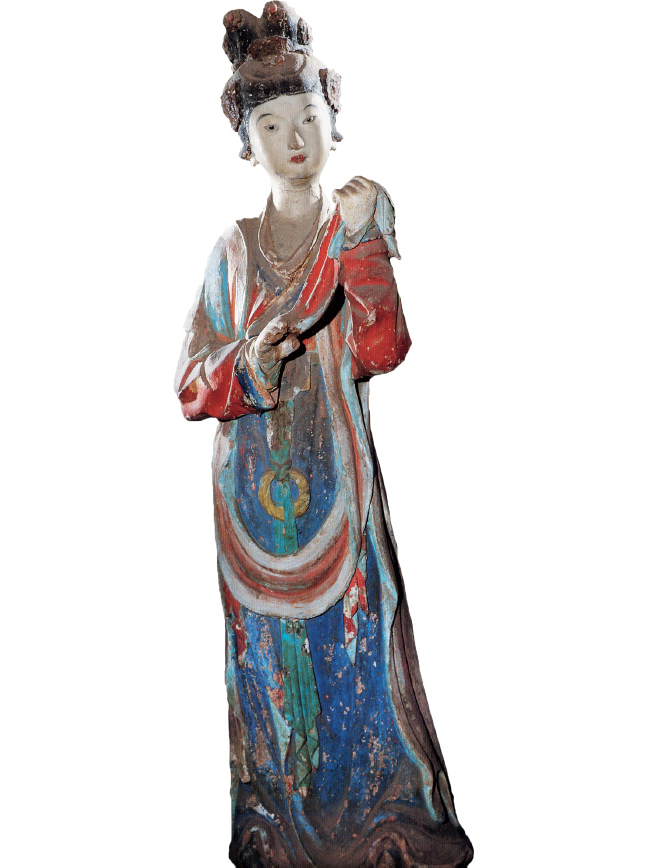Understanding World Societies:
Printed Page 371
Women’s Lives in Song Times
Families who could afford it usually tried to keep their wives and daughters within the walls of the house, rather than let them work in the fields or in shops or inns. At home there was plenty for them to do. Not only was there the work of tending children and preparing meals, but spinning, weaving, and sewing were considered women’s work as well and took a great deal of time. Families that raised silkworms also needed women to do much of the work of caring for the worms. Within the home women generally had considerable say and took an active interest in issues such as the selection of marriage partners for their children.

The Song emperors were patrons of a still-
Women tended to marry between the ages of sixteen and twenty. Their husbands were, on average, a couple of years older than they were. Marriages were arranged by their parents, who would have either called on a professional matchmaker or turned to a friend or relative for suggestions. Before a wedding took place, written agreements were exchanged, listing the prospective bride’s and groom’s birth dates, parents, and grandparents; the gifts that would be exchanged; and the dowry the bride would bring.
The young bride’s first priority was to try to win over her mother-
Women frequently had four, five, or six children, but likely one or more would die in infancy. If a son reached adulthood and married before the woman herself was widowed, she would be considered fortunate, for she would have always had an adult man who could take care of business for her — first her husband, then her grown son.
A woman with a healthy and prosperous husband faced another challenge in middle age: her husband could bring home a concubine. Wives outranked concubines and could give them orders in the house, but a concubine had her own ways of getting back through her hold on the husband. The children born to a concubine were considered just as much children of the family as the wife’s children, and if the wife had had only daughters and the concubine had a son, the wife would find herself dependent on the concubine’s son in her old age.
Neo-
It is true that foot binding began during the Song Dynasty, but it was not recommended by Neo-